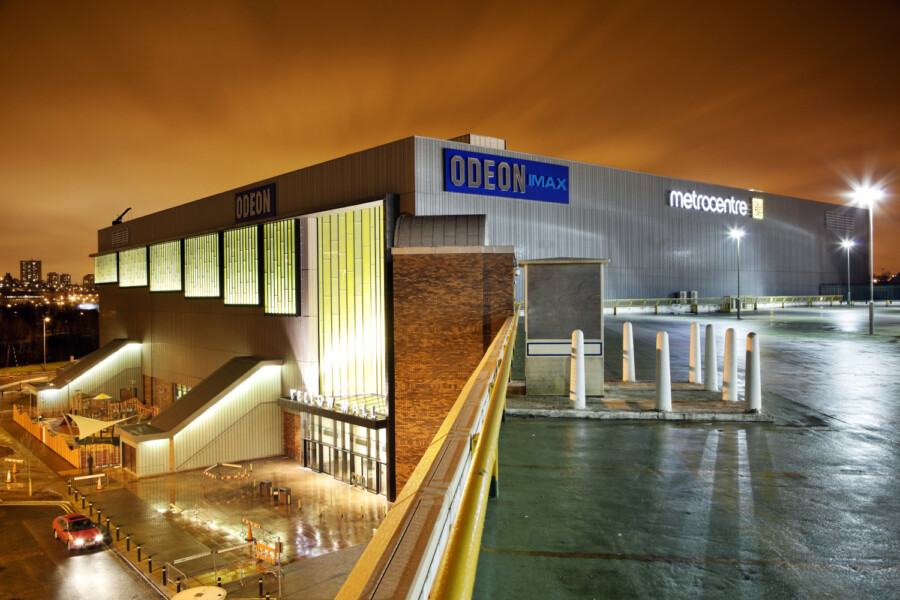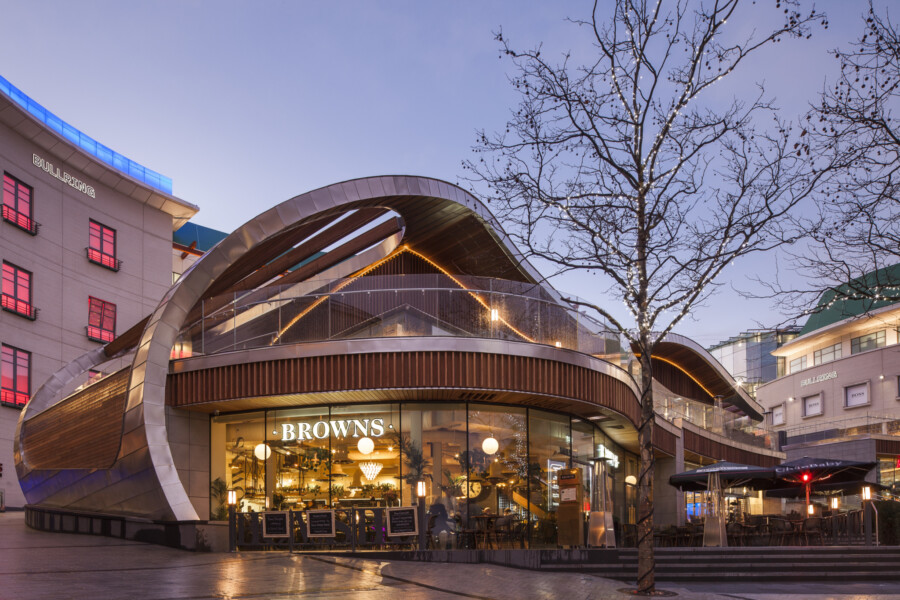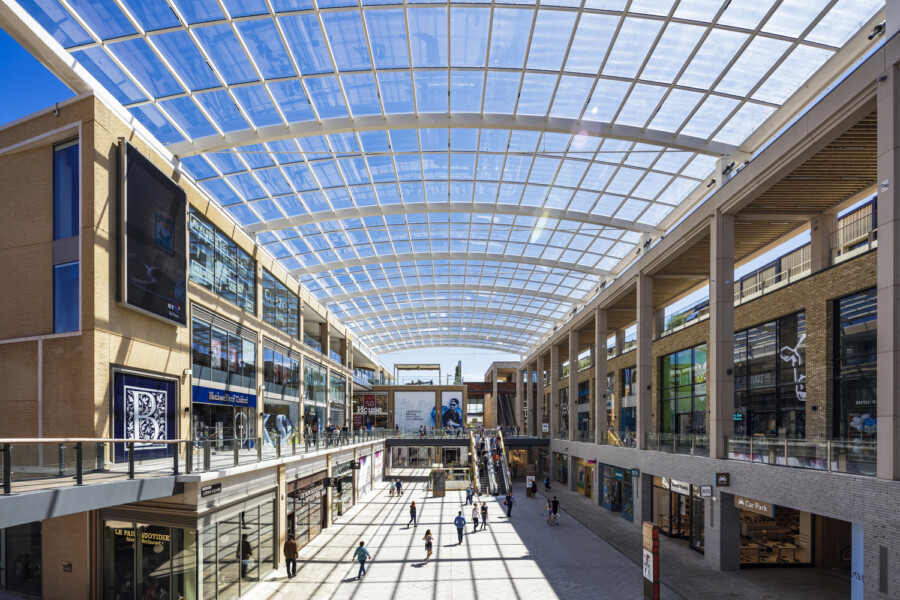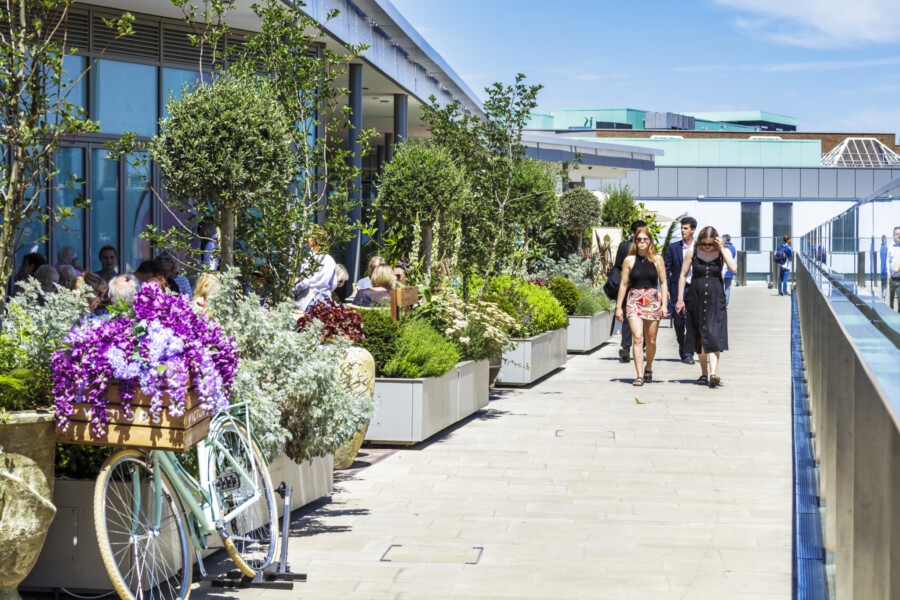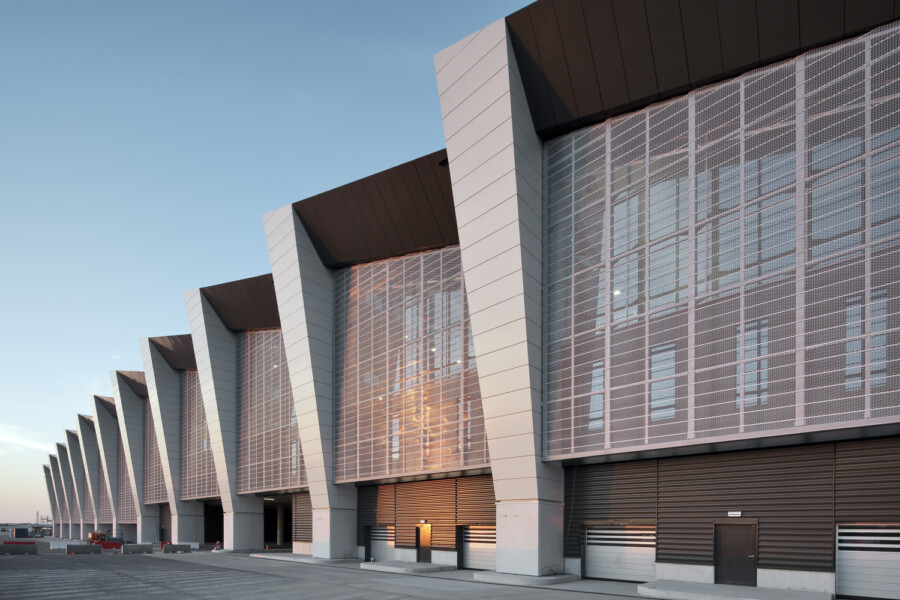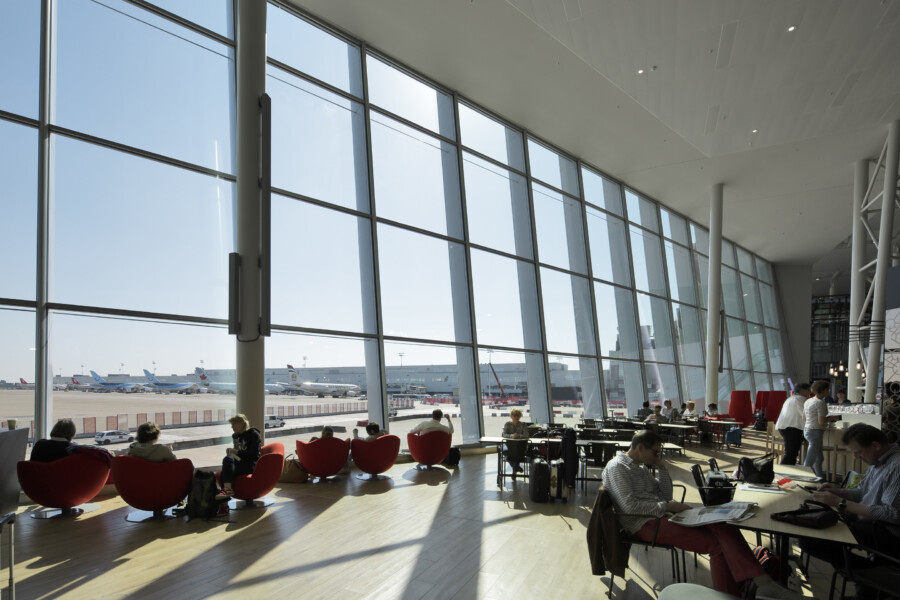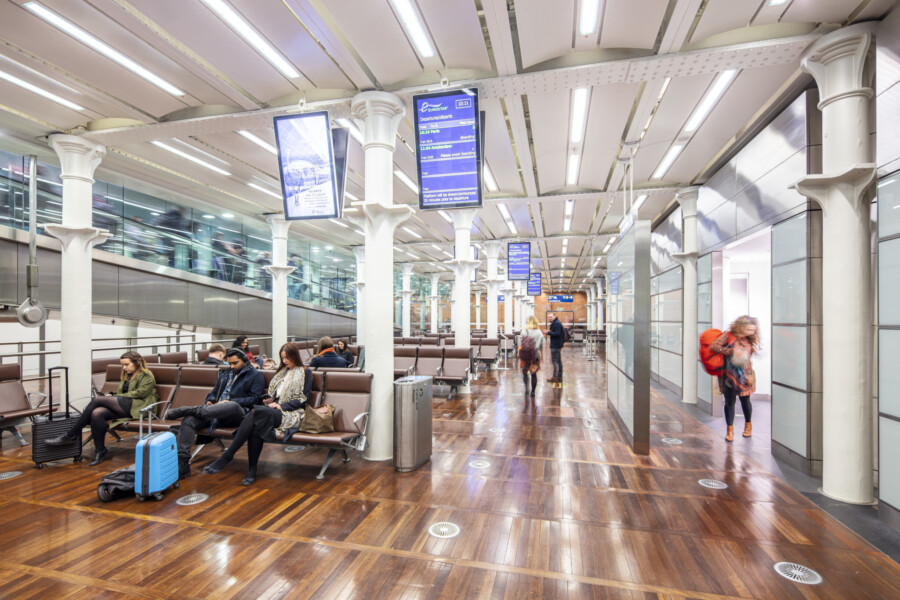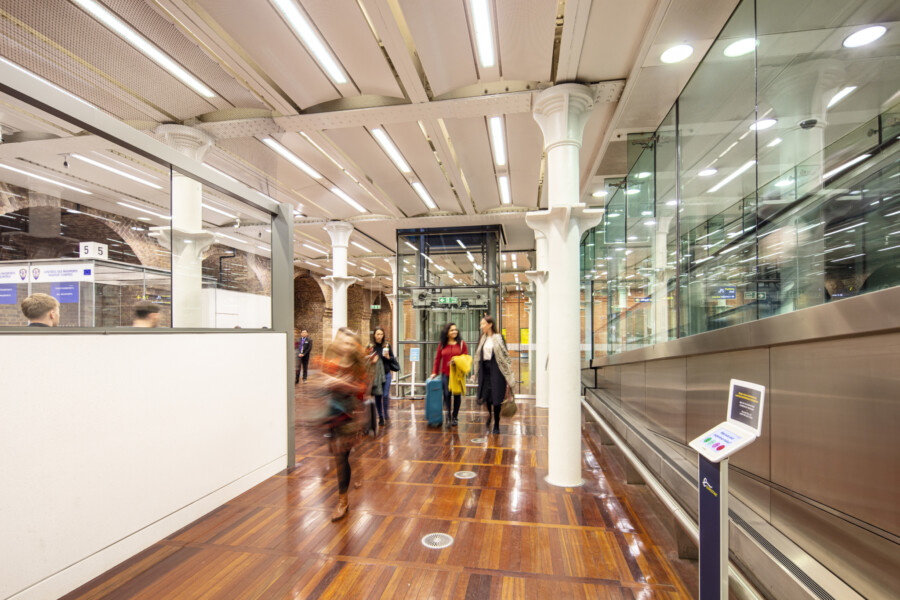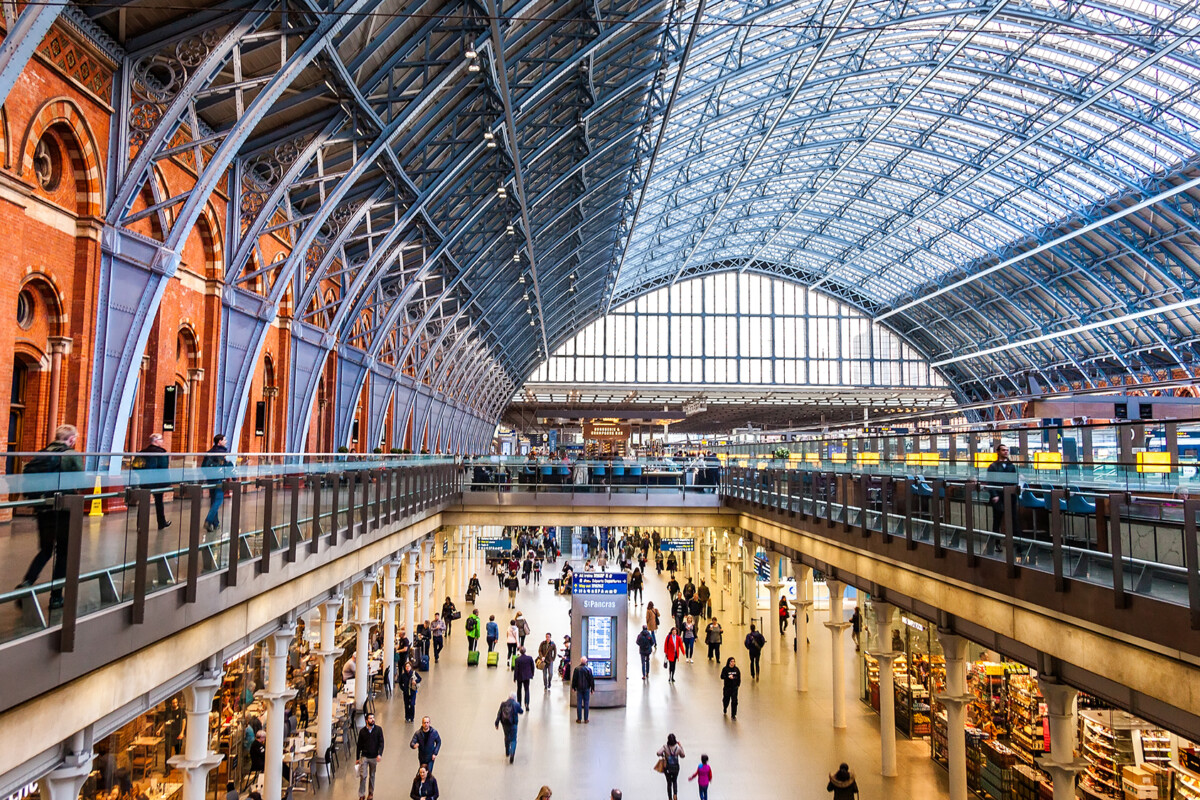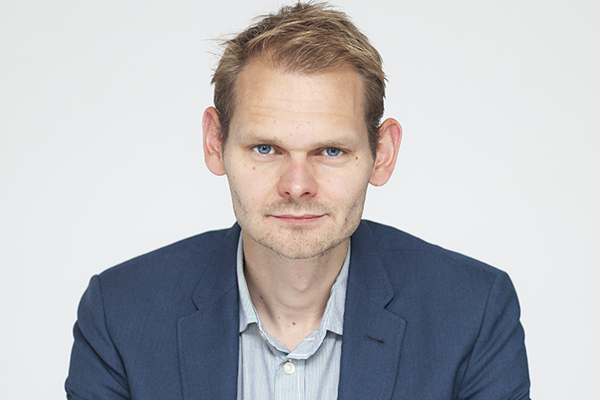
People Profile: Director Luke Kendall
Luke Kendall joined Chapman Taylor in 2006 and has worked on many high-profile projects from conception to delivery, particularly in the transportation, retail and mixed-use sectors. Luke became a Director in 2023 and has strong expertise in leading and managing large design teams on major developments. In this profile, Luke tells us his family background in architecture, the wide variety of challenges he has enjoyed during his Chapman Taylor career and the way forward for passenger hubs in the coming decades.
Tell us about your early life and route into architecture as a career.
I am originally from Teesside in the North-East of England, where my father was an Architect, as was my maternal grandfather - my grandfather was Chief Architect for Burton Menswear stores, based in Leeds, while my father was an Architect specialising in heritage buildings. Even though his early advice wasn’t always 100% positive about a career in architecture (“Don’t do architecture!”), I worked at my father’s practice during university holidays, gaining really useful early experience. This gave me an appreciation for traditional building methods, as well as for the importance of a fine attention to detail, particularly on the sensitive smaller-scale projects.
I originally applied to study Landscape Design, perhaps to differentiate myself from my family’s experience. However, before I started, I realised it was the built form that held the most interest for me and so I switched direction to study Architecture.
I studied at Newcastle University, then spent my year out in York at an architectural practice which was part of a larger construction group, working on a specialist education facility in St Helen’s for the local council. This gave me very useful, hands-on experience of working on a project from beginning to end in a short period of time and also gave me vital exposure to site work and construction before I returned to Newcastle for my master’s degree.
You joined Chapman Taylor in 2006, straight from university?
Yes, Chapman Taylor was the first firm I applied to and was the first to respond and offer me an interview – I liked what I heard about them at interview, and they were keen to recruit me. My first task was to draw a section for the International Departure Lounge at Gatwick Airport’s South Terminal (by coincidence, I’m back working on projects at Gatwick currently).
Tell us about your early projects at Chapman Taylor.
Soon after working at Gatwick, I worked on the Yellow Quadrant at Newcastle’s Metro Centre, producing Employer’s Requirements documents for the new cinema and mall refurbishment – we then stayed on as Monitoring Architect.
I then worked on several aviation projects, including Dubai International Airport Concourse C, where we conducted retail planning and interior design to working drawings stage (our design was subsequently implemented with only minimal changes).
My time at Chapman Taylor, from the start, has been characterised by periods of working on aviation before moving on to commercially focused projects and back again. Today, my focus is on a range of transport-related projects as part of my role as Associate Director with the UK Transportation team.
What were your main commercial projects?
On a personal level, a key project for me was Spiceal Street at Birmingham’s Bullring shopping centre, because I was able to work on it from concept design to delivery. It was a relatively small project compared with others I have worked on, but the scale gave me good project ownership at an early point in my career.
I worked for two years, client-side, on the award-winning Trinity shopping centre in Leeds, on a number of elements of the scheme – in particular the refurbishment of Trinity West, which included the innovative Trinity Kitchen street food concept.
Another major scheme was the delivery of Westgate shopping centre in Oxford, on which I worked for over two years – it was a standout project for me because of the sheer scale and complexity involved. We delivered it after receiving Employers’ Requirements documents from five different designers and coordinating all of those was a challenge. It was, however, also a very rewarding scheme, from which I learned a lot. This led to another large and complex retail scheme at Brent Cross in London, where many of the lessons learnt from Oxford could be used.
You have since worked on mainly transportation projects – what were some of the key projects?
I worked on the Brussels Airport Connector project, producing Employer’s Requirements documents after we developed our winning competition concept for the new extension building. I coordinated the structural and architectural design, looking at how this informed the building language, envelope and fabric. The building was designed as a spacious link building between two terminals, and we focused on passenger comfort and experience as much as on the striking design.
The past two years have involved quite varied work on several diverse transportation projects at any one time. For example, I have worked on very early, pre-Feasibility stages for projects at Gatwick and Wycombe while simultaneously working on projects at more advanced stages, such as the construction stages for cargo facilities near Heathrow Airport. In previous years, I tended to work on perhaps two or three larger projects in a 12-month period, so this has been an interesting change for me – it is nice to experience the relatively rapid change of focus required for dealing with projects at different stages simultaneously.
You chaired Chapman Taylor’s Executive Group of Senior Architects and Designers before becoming an Associate Director – tell us about your role.
The Executive Group is made up of teams of dedicated staff who work together to foster better connections between people, teams and studios. My period as Chair saw us create the sectional structure which we use today, such as CT Learning and CT Studio – which allowed for a more concentrated focus on important areas of the group’s activities. The new structure created clearly defined roles for the group’s members, which provided momentum to our activities.
I think that an important innovation during my time as Chair was to change the nature of our CPD (Continuing Professional Development) seminar programme to make use of the expertise we have across our company as well as specialist external consultants. Previously, we relied on presentations by other companies who were there to advertise specific products or services, but we wanted to incorporate more general learning within the programme. This has been very successful ever since, with CPD seminars being used to communicate important ideas about design, including health and safety aspects.
Which recent projects stand out for you?
Project SPICE at St Pancras had been an enjoyable challenge because of the live working environment, the security requirements and the heritage sensitivities involved. There are many different stakeholders who need to be consulted, despite the fact it is a relatively small scheme in a small space, including HS1, the UK Border Force, Network Rail, Eurostar and the French authorities. It is therefore vital that the design is rigorous and takes account of the requirements of a wide variety of interested parties. St Pancras is a Grade 1-listed building, so any intervention we propose is intensively scrutinised – the detailing has to be of the very highest quality to satisfy the relevant heritage bodies.
My current work at Gatwick is also very interesting; this includes several early-stage concept designs to support Gatwick’s upcoming development programme. We have designed packages for a wide range of the airport’s future operations and commercial development; our role now is to bring together all of these features as part of a coordinated masterplan which we can communicate to the general public, as well as internally within Gatwick Airport, about what Gatwick may look to build in the future.
I am also working on a transportation-related catering facility; this is a very complex scheme because the environment we are designing has to be responsive to very fluid circumstances and schedules. The client requires the space to be very flexible so that they can adapt to constantly changing requirements while still meeting strict regulatory standards. The client company also has high expectations for the presentation and front-of-house areas and wants to be very transparent to their own clients about the processes involved – the design we are creating will bring a sense of quality to the spaces in which they host those clients.
You have been at Chapman Taylor for 14 years now – what has kept you at the company?
I have been incredibly lucky to be able to work on such a wide variety of projects, including for well-known clients and in high-profile environments. Schemes such as Trinity, Westgate, Brent Cross and St Pancras have been really interesting and complex projects which taught me a lot, and I was fortunate to be able to manage projects from beginning to end at a very early point in my career. As I have progressed, each new project which has come along has presented interesting new challenges.
My experience working on the construction and delivery stages of projects has been very useful for informing the early design stages of other schemes, making the whole process more efficient because I know how the early design translates when the scheme is being built and the issues that can arise.
Where do you see your role, and that of the team, heading next?
My role has understandably changed over the years that I have worked here. I now have responsibility for a number of projects and have a number of project teams to oversee. This involves more management and being involved in shaping the business – particularly in the transportation sector, which is my current focus.
I’m very committed to the task of helping the UK Transportation team grow across the UK and to take on more and more projects, both nationally and internationally. We have expanded our team greatly in the last year and now have key members in Manchester and Bristol as well as in London, which will help us achieve our ambition of becoming one of the key consultants in aviation, railway, road and industrial design across the UK, not just in and around London.
"Airport Terminal identity should reflect the artistic heritage and social culture of the destination rather than the monocultural internationalism"
What is next for transport hub design?
The nature of the commercial offer at airports and railway stations is crucial to the financial success of these places as well as to the social role they perform. Passengers now expect something different, in terms of the offer and the environment, and passenger hubs need to encourage people to arrive earlier and stay longer.
Airports, in particular, are on the cusp of a major change – people expect to engage with the commercial offer much earlier, in a more tailored way, even when booking tickets online. They also want a range of environments from which to choose where to dwell, requiring the provision of more ‘lounge’ or ‘members club’-style areas, for example, rather than a busy, single-focus commercial area.
This potential change needs to be at the forefront of our design approach to transportation hub spaces so that people begin to see airports and railway stations as destinations in their own right – places in which they actively want to spend time.
Also at the forefront of our thinking is terminal identity. This identity should reflect the artistic heritage and social culture of the destination rather than the monocultural internationalism that has been the leading style for some time. Understanding how to marry the required building efficiency with a unique and high-quality passenger experience is the main challenge in new hub design.
Your dad advised you not to become an architect – what is your advice to those considering it as a career today?
Architecture is very challenging, but incredibly rewarding. It’s really a broad vocation and not a specialism. It requires a wide understanding of many areas, from technology and science to history, art and law.
It is quite demanding, but the variety of available opportunities and the satisfaction that can be gained on the successful completion of a project make a career in architecture fully worth the effort.
